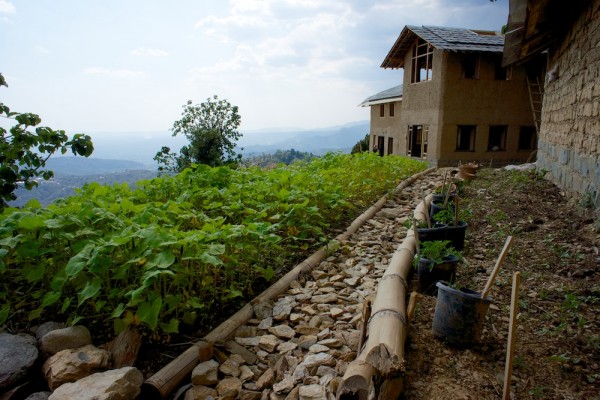Learning from Lockdown: Colors of COVID-19 in the Himalayas
Dharmalaya Institute is Earthville’s campus in the Himalayas. In this article, the institute’s assistant manager and architect Anushka Joshi shares about her experience of the impact of COVID-19 in the village.
Trembling with fear, anxiety and panic — that is what hit me when I realized that COVID-19 is here. All I could think was, Is this even real? A world that never stopped had suddenly paused, and the lives that we all had planned stopped working according to plan, leaving the whole world with a feeling of uncertainty. The new coronavirus left us with a gift — the gift of the present — and we weren’t sure how to feel about that.
 The slow-paced rural life had also changed because of the pandemic. Suddenly, loving people who usually are quite social started hesitating to give goodbye hugs, even though it made them uncomfortable just to say “namaste” (greetings) and “apna khayal rakhna” (take care) while sending someone off without knowing for how long. A shift in conversation topics in the village was quite visible, too: People were talking about the updated corona-related news rather than who was planning a dham (traditional feast) next or the other usual village gossip. COVID-19 changed not only the life on the ground, but also in the sky over Bir: The sky, once filled with colourful parachutes, became an empty, bright blue sky with no paragliders accompanying the beautiful birds that migrated here with the beginning of spring.
The slow-paced rural life had also changed because of the pandemic. Suddenly, loving people who usually are quite social started hesitating to give goodbye hugs, even though it made them uncomfortable just to say “namaste” (greetings) and “apna khayal rakhna” (take care) while sending someone off without knowing for how long. A shift in conversation topics in the village was quite visible, too: People were talking about the updated corona-related news rather than who was planning a dham (traditional feast) next or the other usual village gossip. COVID-19 changed not only the life on the ground, but also in the sky over Bir: The sky, once filled with colourful parachutes, became an empty, bright blue sky with no paragliders accompanying the beautiful birds that migrated here with the beginning of spring.
The already-quiet life now felt extra-quiet, such that I suddenly understood what my school teachers meant when they said pin-drop silence. The green, life-filled mountains and valleys felt a little dead without people. Maybe that was a projection of how I felt inside then. This feeling stayed with me for a few days until I realized the beauty of this time — a time like never before, when we can just be . This indeed was a gift.
The mountains and valleys that I had begun perceiving as lifeless started looking more alive once I started reflecting on how precious this time is.
It helped me see more colours in myself as well as in the outside world. New leaves were growing in the trees, which turned the dark green, dusty, old-looking forest into a fresh, sun-bathed, light green one. Many new colours started coming in with each passing day, with the bright red burans (rhododendron) and pink kachnar (orchid/mountain ebony) flowers blossoming everywhere. Apricots and plums had started growing on the trees, which made me quite happy. Baby lungru (fiddlehead fern), fresh jungli pudhina (wild mint), and many more wild greens layered the forest floor with different shades of green. Colourful berries like the reddish-purple kaafal (box myrtle/bayberry) and golden-yellow hisalu (Himalayan raspberry) were also popping, for the villagers, animals and birds to enjoy.

No comments yet.